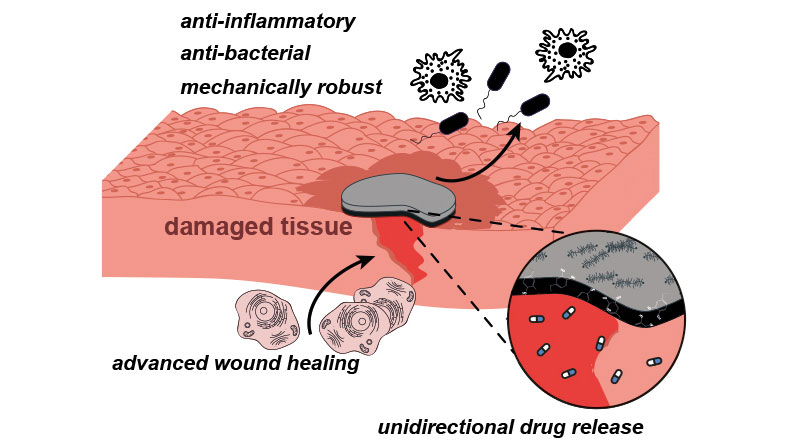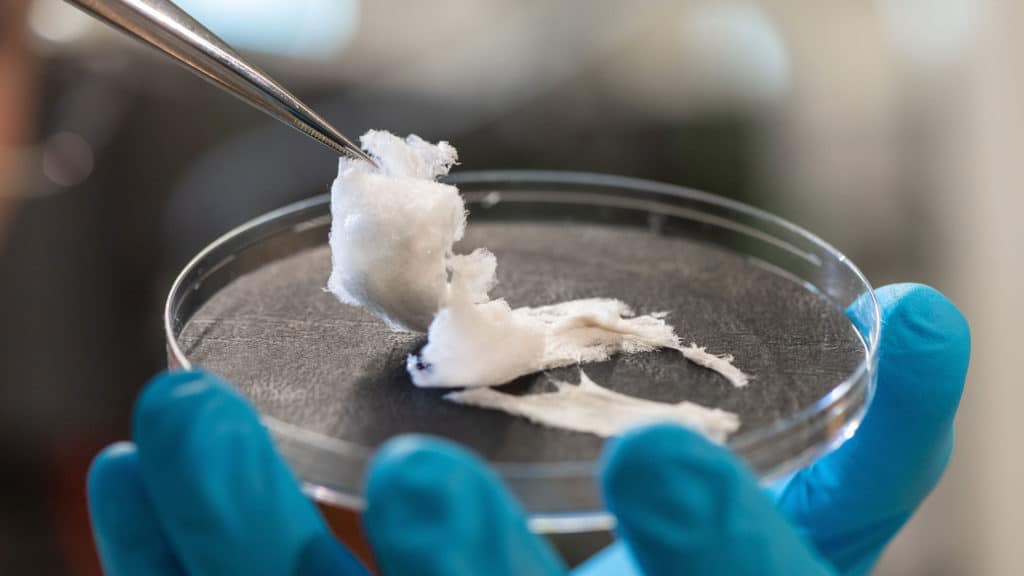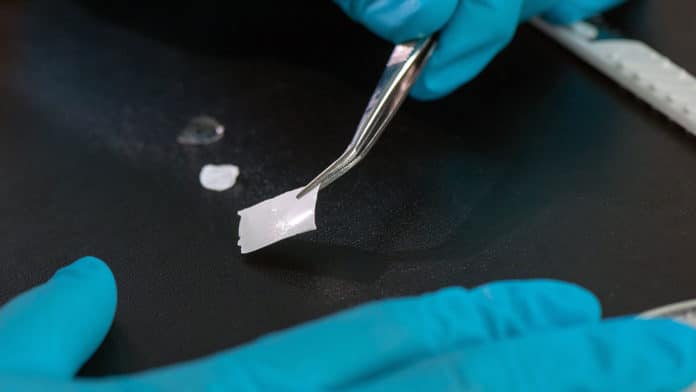Traditional bandages may be useful for healing small skin abrasions. Still, soft-tissue injuries, such as those on the tongue or sensitive regions like the intestines, are more challenging to treat. While promoting wound closure, a battle must be won against external factors that may adversely affect the healing process.
A team led by Oliver Lieleg, Professor of Biomechanics at the Technical University of Munich (TUM), has developed a multifunctional bandage that adheres to the sensitive tissue and releases active ingredients. Scientists have developed a biomolecular film that protects wounds the way a bandage does, helps wounds to heal faster, repels bacteria, and dampens inflammation. It releases active pharmaceutical ingredients in a targeted manner and ultimately dissolves by itself.
These biomolecular bandages even adhere to smooth surfaces such as cartilage and moist tissue such as the tongue without damaging the tissue surface. Covering a skin wound with this film even sped up the healing process.

Ceren Kimna, the first author of the study, said, “When dry, the thin and flexible film can be picked up with tweezers and can easily be placed onto a wound. Upon contact with moist tissue, the bottom side of the film becomes squishy and sticky and adheres to the tissue by itself – without requiring additional fixation.”
The film consists of two layers: The top side consists of a biodegradable polymer which renders the thin film stable, and it also contains mucins. The bottom side of the film includes hyaluronic acid, a material well-known for its ability to bind water and promote the healing of wounds.
Other molecules are chemically bonded to those hyaluronic acid macromolecules, ensuring that the film becomes sticky when exposed to moisture, allowing the film to adhere to a tissue.
Professor Lieleg, who has been investigating these molecules for over a decade, said, “Mucins are molecules which occur naturally on mucous membranes of our bodies. Here, we have used them for the first time in biomolecular films to support wound healing. They provide important properties to protect the wound during the healing process: They have anti-bacterial properties, dampen inflammation and prevent unwanted cells from colonizing the wound.”

If required, antibiotics can also be integrated into the bottom layer. Thanks to its two-layer structure, the bandage release the active ingredients in only one specific direction: towards the wound.
When tested on animals, the bandage demonstrated accelerated wound healing. The suitability of the bandage for potential future use with human patients will be examined in additional studies.
Journal Reference:
- Ceren Kimna et al. Multifunctional ‘Janus-type’ bilayer films combine broad-range tissue adhesion with guided drug release. Advanced Functional Materials, April 2022. DOI: doi.org/10.1002/adfm.20210572
